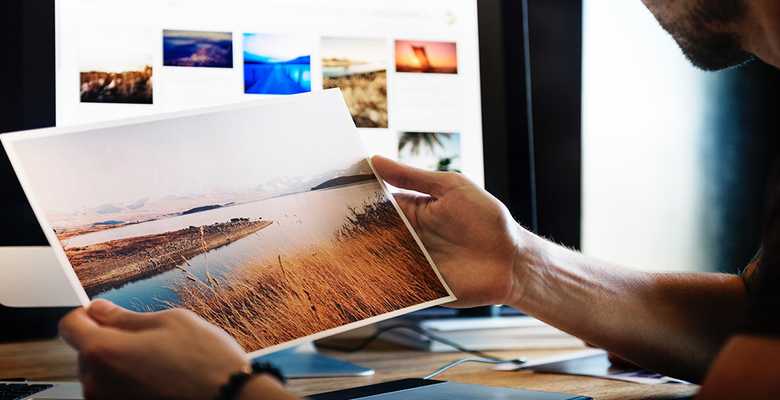Launch an online presence that makes it simple to attract, win, and serve clients
B12 uses AI and experts to quickly set up your website, scheduling, payments, email marketing, and more.
Get started for free
How and where to find high-quality stock images in 2023

Consumers are visual creatures. Because of this, when they visit your site, they want to gain a deeper understanding of what they’re spending their money on. The easiest way for you to do this is by adding high-quality images. But where do you go to find them? And why are they so important?
Whether you’re selling products or offering services, the images you use can make a significant difference in your conversion rates. Here’s how to find the images that’ll take your website from passable to stunning.
What makes a high-quality image?
There are two ways of measuring whether an image is high quality:
- Technical quality: These metrics measure quality in the literal sense of the word.
- Image relevance: You also need to make sure your pictures are actually relevant to your site.
Let's take a look at both of these in a little more detail.
1. Get your technical quality right
In terms of technical quality, you’re looking for images with a minimum Dots Per Square Inch (DPI). For an image to tick every quality box on the web, they need a DPI of at least 72.
72 DPI is all a computer screen will display anyway, so there’s no point in aiming for the covetable print standard of 300 DPI. It’s probably also worth knowing that higher DPI results in much s-l-o-w-e-r loading times.
In addition to aiming for the right DPI, you need to start looking at size. Anything less than 1500 pixels in width is likely to look blurry, which doesn’t add to the professional online image you want to generate. For maximum upper limits, look for images that are no larger than 2500 pixels in width.
Of course, DPI and pixels aren’t everything. If an image is blurry, filled with unnecessary light, or just downright messy, you want to keep them off your site. As a basic litmus test, look at an image and ask yourself whether you’d be impressed by it if you were in your visitors’ shoes.
2. After technical quality comes relevance
Even if an image is high-quality on the tech front, it’s not worth much if it isn’t relevant. Don’t let the aesthetics of an image sway you when choosing one. Always consider whether it reflects the products and services you’re offering and whether it matches your brand. You’ll also want to consider whether it will resonate with your target audience.
Where can you find free high-quality images?
Although paying for stock photos is an option, we understand that staying within budget is important. Fortunately, the explosive nature of the internet means finding free high-quality images is easy.
Websites like Unsplash and Pixabay offer thousands of high-quality images for free. For many, Unsplash is a go-to resource at B12, and you can use the images as you wish. Most sites will request that you give the photographer credit. If you use Unsplash, doing so is optional, but you should never claim that an image is entirely your work or that it originates from your business when it doesn’t.
One of the biggest perks of using these images is that they must meet minimum standards before the sites agree to publish them. Because of this, you can guarantee that they were taken using a professional camera.
Before downloading and adding images to your site, check the terms of use carefully. The image owner can still request that you remove them from your site if you don’t acknowledge the photographer or if you use them incorrectly.
Where else can you find images for your site?
Another excellent resource for high-quality images is a stock photo website like Shutterstock. But why pay for images when you can get them elsewhere for free?
There’s an argument to suggest that paying for stock photos also means you’re paying for exclusivity. In many cases, a photo won’t be exclusively yours and yours alone. But because you’re paying for the privilege of using a photographer’s work, fewer people may be using it.
This means a customer is less likely to see an image on your site and recognize it from somewhere else. And when you pay for use through a site like Shutterstock, you'll never have to worry about usage permission, photo rights, and other potential issues.
Pay close attention to usage policies
It’s important not to take a rushed approach to securing stock images. And by rushed approach, we mean seeing one that looks amazing and assuming the equally awesome price tag means you can use it as you want. Even when you pay for an image, there’s likely to be restrictions.
For example, some low-cost image packages may come with the disclaimer that you can only use them on a personal blog. This means using it for advertising puts you in breach of terms of use. As a result, your low-cost stock image tactics could result in a high-price fine. Taking a few moments to read the small print can save a lot of money (and trouble) later.
Here are some examples of the restrictions you should look for:
Single use: Single use may mean that you can only use the image once on your site rather than on several pages.
- Editing restrictions: You might find that you can use an image in multiple areas, but that you can’t edit or alter it in any way.
- Audience restrictions: Some images come with an audience restriction, making them unsuitable for sites that attract lots of unique viewers.
- Editorial licenses: Editorial licenses are often more flexible, allowing you to use images multiple times and show them to millions of people.
The terms of images often vary between sites and photographers. Fortunately, they are typically pretty easy to understand. If you’re ever in doubt, it’s a good idea to reach out to them for more information.
Why are high-quality images important?
All of this may seem like a lot of effort, but we promise it’s worth it. So why are high-quality images vital?
Shopping online is an experience that should remain convenient for consumers. Whether they’re buying a product or looking for a service, they need information that’ll sway their purchasing decision. As most people are highly visual creatures, they need high-quality images to persuade them that your business is worth their time.
Think about it from your perspective. If you're looking to buy something online, you'll probably look at a product's pictures. How would you react if those pictures were blurry, too small, unclear, or otherwise low quality? You probably wouldn't be inclined to buy!
It sometimes helps to look at what the benefits are for your business rather than just examining what the right images will do for your customers.
High-quality images boost web traffic
Did you know that 10.1% of all of Google’s traffic comes from its images section? That’s a significant chunk to miss out on! When you add images to your site, you can use SEO tactics that boost your business’ ranking. This happens when you add keywords to the image’s alt tag. If this isn’t something you feel comfortable doing yourself, a B12 web expert can do it for you.
When a customer searches for the term that’ll lead them to your site, they’ll also see images from your competitors. Not every image will be relevant. And, some will look poor. If yours is both relevant and high-quality, they’ll gravitate toward it.
Images increase customer engagement
Consider your website and product pages from a customer perspective. Is there a chance they’ll feel bored if they click through and find lots of text but no visual cues? Will it enhance their existing opinion of your brand?
If you find an image that complements your brand, you’ll increase customer engagement. Engaged visitors are more likely to turn into paying customers. One trick to achieve this is to find images that feature the same colors you want to associate with your brand.
You give your website a personal feel
Regardless of your industry, customers subliminally crave a personal connection. After all, they’re about to get personal with you. They’re handing over their money in exchange for something that will improve their life.
Images of your business and how it operates will help customers generate a personal connection and make you appear more approachable.
Adding images to your site will always be essential, but you shouldn’t stop at using anything and everything you see. Focusing on the right DPI and pixels are both important. You should also hone in on relevance and images that complement your brand. During this process, always remain conscious of licensing agreements.
You can also rely on B12’s human + machine model to find the perfect images for your website. To find out how we can help, get in touch with us today.
Have professional designers improve your website for you
Spend less time on your website and more time growing your business
Let B12 set up your professional online presence with everything you need to attract, win, and serve clients.





